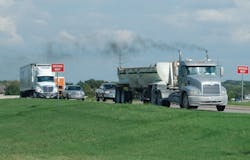Congrats on limiting the effects of the increase cost of fuel
It’s always interesting when the American Transportation Research Institue (ATRI) comes out with its annual An Analysis of the Operational Costs of Trucking report. The 2018 update included data from motor carriers that accounted for 178,926 truck-tractors, 4,773 straight-trucks, and 360,434 total trailers, and accumulated over 9.4 billion miles in 2017 across a variety of industry segments and fleet sizes.
The numbers are from 2017 before we saw pay raises for drivers and before full implementation of the ELD mandate may have capped average miles and before increases in the cost of oil boosted diesel prices up.
The shortage of drivers is changing the dynamics of trucking costs and could alter the labor/fuel cost ratio. The labor/fuel cost in 2014 was about 1, when, again according to this same ATRI report, the cost of fuel per mile was $0.58 and the total labor $0.59. But the latest ATRI data suggests it was closer to 2 in 2017.
So what does that mean? As the ratio grows and the cost of the driver eclipses the cost of fuel it may cause fleets to look at their operations differently. One option is that they will become more interested in automated vehicles, but it could also cause them to consider wider use of 53-foot doubles to haul more freight per driver as in done in Canada and in some limited regions of the U.S. Or it could push the growth of intermodal.
Another interesting aspect of the new data here is specifically the cost per mile of the fuel. When compared to 2016, that cost is up in 2017 to $0.37 from $0.34, a 9.5% increase. A big jump in costs, but it could have been worse. When comparing the diesel cost at the pump, using the commonly referenced U.S. Energy Information Administration, that cost rose from $2.30 to $2.65/gallon, respectively 2016 to 2017. This was a 15% increase. So, congrats to you all, you limited the increased cost of fuel at the pump by getting better MPG on the trucks.
So, what is my takeaway from this year’s report? Driver costs are up, raising the ratio of labor/fuel to about 2, and fuel costs at the pump are up. But, fleets are continuing to deliver the goods we need by keeping drivers in the seats and ALL our collective works on saving fuel is paying off, to limit the fuel expense when pump prices increase. Keep on Truckin’, as efficiently as possible.
About the Author

Michael Roeth
Executive Director
Michael Roeth is the executive director of the North American Council for Freight Efficiency. He serves on the second National Academy of Sciences Committee on Technologies and Approaches for Reducing the Fuel Consumption of Medium and Heavy-Duty Vehicles and has held various positions with Navistar and Behr/Cummins.
